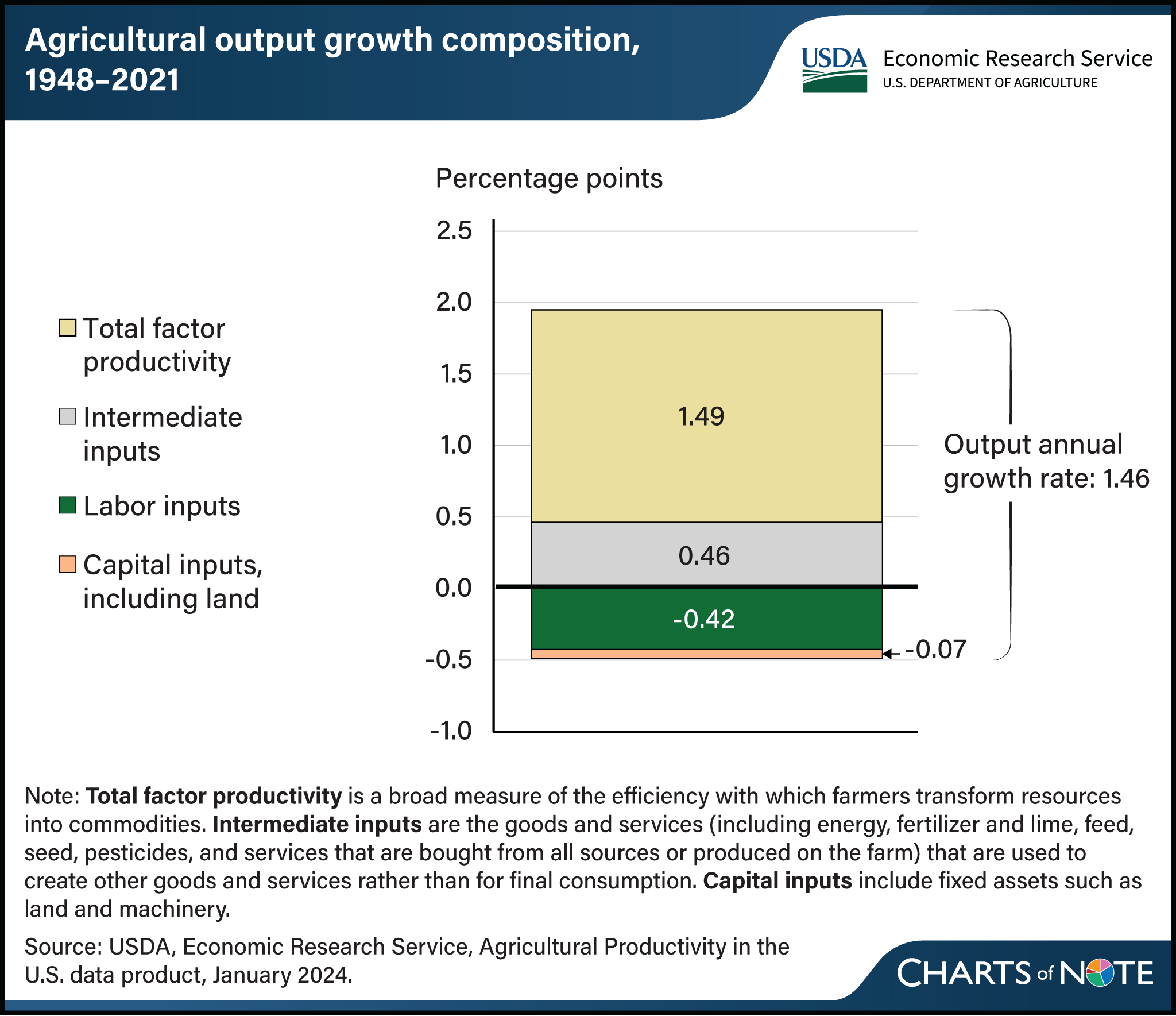Main source of U.S. agricultural output growth is productivity improvement
- by Sun Ling Wang
- 9/17/2024

From 1948 to 2021, U.S. agricultural output grew at an average annual rate of 1.46 percent. The largest contributor to this growth came from improvement in total factor productivity, which measures changes in the efficiency with which inputs are transformed into outputs. The major drivers of such productivity growth include innovations in animal and crop genetics, improvements in operation management, and changing farm sector structure. Over seven decades, total factor productivity added an annual average of 1.49 percentage points to the output growth rate. Intermediate inputs, such as agricultural chemicals, energy, purchased services, feed, and seed, added 0.46 percentage point. The positive contributions of intermediate inputs and total factor productivity were partially offset by reductions in capital (made up mostly of land) and labor inputs. The contribution to the output growth rate of labor use decline was -0.42 percentage point, and that of capital inputs (including land) reduction was -0.07 percentage point, accounting for a combined decrease of 0.49 percentage point. That decrease slightly exceeded the positive contribution from intermediate inputs, meaning fewer inputs were used during the period. As a result, farmers and ranchers are producing more with fewer inputs. For more on U.S. agricultural productivity trends, see the USDA, Economic Research Service (ERS) Agricultural Research and Productivity topic page and the ERS Agricultural Productivity in the U.S. data product. This chart appears in the ERS technical bulletin Measurement of Output, Inputs, and Total Factor Productivity in U.S. Agricultural Productivity Accounts, published in August 2024.


